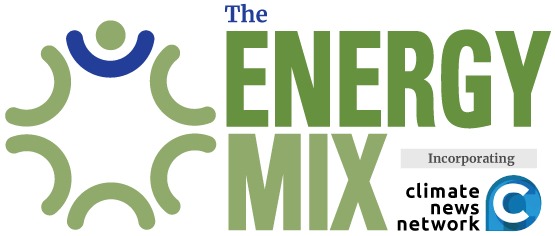Low Water, High Water Temps Force French Nuclear Plants to Cut Output Despite Rising Demand
Declining water levels in French rivers have revealed a key weakness in relying on nuclear power to supply clean energy in a climate emergency— nuclear reactors need to cut output when climate change lowers water levels and raises water temperatures, even as energy demand rises.
“While a lot of the nuclear public relations relates to nuclear as a sort of saviour of climate change, unfortunately, the reverse is true,” Paul Dorfman, chair of the Nuclear Consulting Group and a senior academic at the University of Sussex, told Ankara, Türkiye-based Anadolu Ajansi.
“Nuclear will be a significant and early climate casualty.”
The interplay of climate change, water, and nuclear power is fairly straightforward. Climate change increases the occurrence of both heat waves and droughts, which lower water levels and raise demand for energy to power cooling appliances. Nuclear power plants rely on access to freshwater to cool reactors. If there is not enough freshwater for cooling, or that water is too warm, the nuclear plant needs to scale back, even as consumers crank up their air conditioners.
Several nuclear generating plants in Europe this year have already reduced output or shut down because water sources are too shallow or too hot, including nearly all of France’s 18 nuclear facilities, says Anadolu Ajansi.
While reporting that forecasted shallow waters on the Meuse River were prompting Electricité de France SA (EDF) to consider cutting nuclear power production in northern France in mid-August, Bloomberg reported that four French reactors had to shut down this year when their filter drums clogged with jellyfish, whose populations are also increasing because of climate change.
Sustainably operating a nuclear generating plant also requires a sufficiently large body of water to release spent cooling water back into—if water levels are low, the water carrying the nuclear reactor’s heat can have an outsized impact on the water source’s temperatures, with potentially disastrous effects on freshwater ecosystems.
“If that… superheated water is discharged back to the rivers, basically it kills the river ecology,” said Dorfman. “So there are regulatory temperature thresholds—and France has breached those numbers.”
The risk is also more severe for older facilities that directly draw and discharge water from freshwater sources, compared to newer closed-loop systems that circulate heated water into cooling towers to release heat as steam. However, Canadian research firm Ouranos points out that the closed-loop systems require chemically treating the water and still reduce water levels across a watershed.
Climate change’s impacts on nuclear energy production are particularly acute for France, which currently produces two-thirds of its electricity from nuclear power sources. Lowering water levels have threatened the country’s nuclear generation in past years as well, including the summer of 2022. Following concerns over low water levels that year, a 2023 report by the French Court of Auditors found that forced nuclear reactor shutdowns due to low water levels would become three to four times more frequent by 2050.
While Ouranos reports that Canadian nuclear reactors are at lower risk of these issues because they were built with large design margins, it cautioned that the risks are substantial enough that “rising temperatures could become an important design consideration for cooling systems” in any new nuclear facilities.
Other studies have noted [pdf] that Canadian nuclear facilities’ water needs still translate into environmental impacts, and cooling water releases from nuclear facilities along the Great Lakes have caused adverse impacts on fish populations.
Cover photo: Cruas-Meysse Nuclear Station, France/Yelkrokoyade, wikimedia commons


